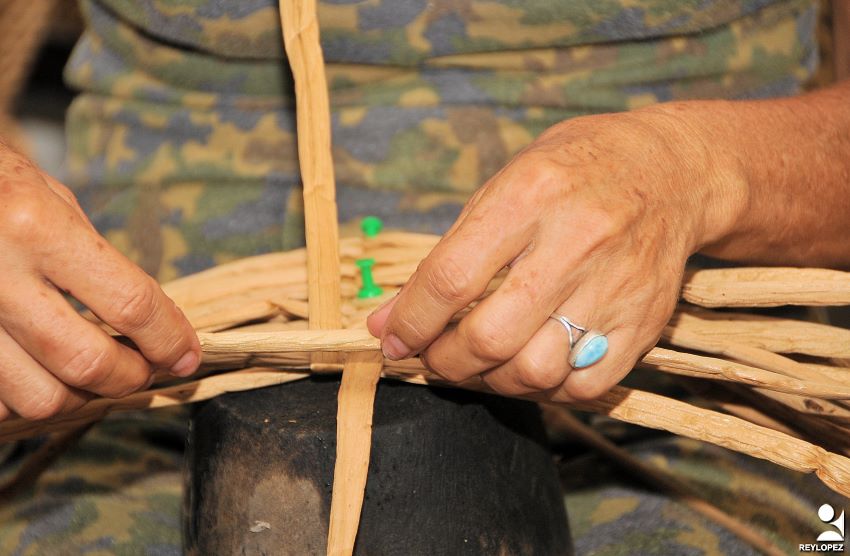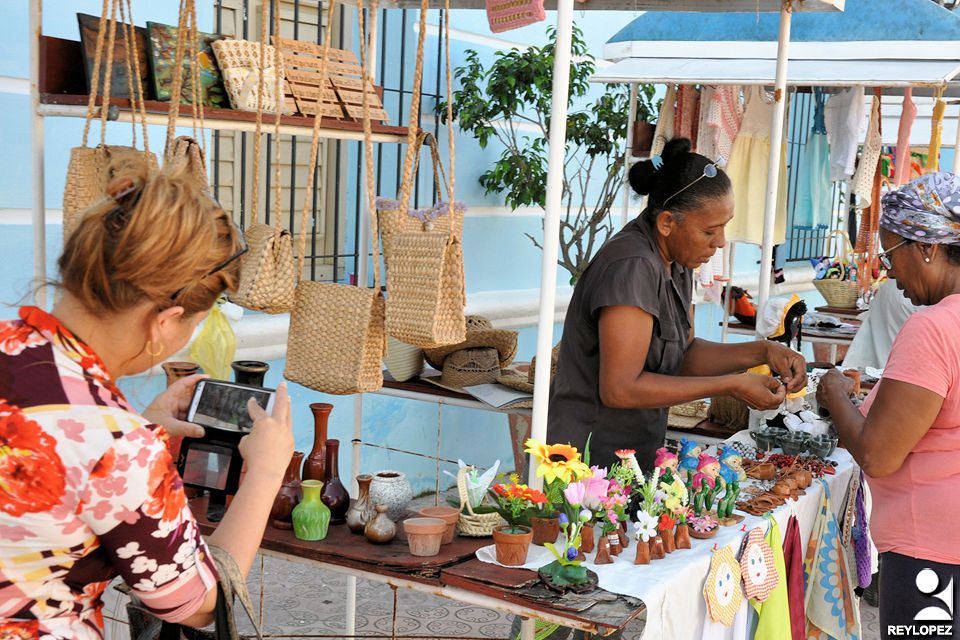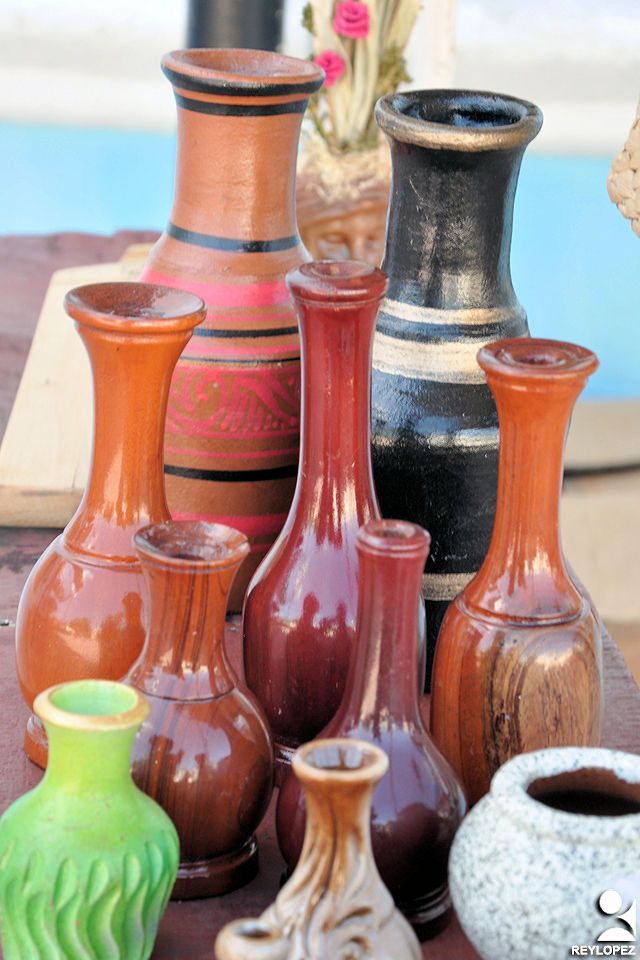
Las Tunas, being a purely agricultural province, is home to many peasant families. This, together with the institutionalization of culture and other factors, has created the basis for the transmission of handicraft knowledge from generation to generation in different communities. In the south of the land of Vicente García, for example, this dynamic is consolidated (mainly in yarey, anacahuita, and guaniquiqui), which also contributes to the fixation of our identity.
According to data published on its website, the Cuban Fund for Cultural Assets (FCBC in Spanish) has wisely brought together more than 300 creators experienced in working with fiber, leather, wood, ceramics, and other materials, participating in the most important commercial events in our country, in addition to the activities in the courtyard.
The province has been recognized by the Cuban Association of Artisan Artists (ACAA by its acronym in Spanish) at the national level and by the National Center of Crafts, due to creations of this type with a utilitarian character, in which basketry stands out fundamentally. Likewise, the fiber weavings generated from here at the Havana International Crafts Fair (Fiart in Spanish) have achieved great prestige.
In 2019, for example, Pabexpo had during the National Crafts Fair Art for Mom with a significant sample of confections made by mothers from Las Tunas, where the basketry woven in natural fiber stood out, a leading product of this territory and guarantor of important national and international awards.
Further back in time, in 2007, the López Proenza family was awarded the Seal of Craftsmanship Excellence by the United Nations Educational, Scientific and Cultural Organization (UNESCO), while the Martínez Plaza family won the Fiart Award.
Likewise, the sadly deceased Petronila Escobar Mayo (weaver of yarey fibers) won the National Crafts Award for Life's Work. All of them have left their mark on basket weaving.

Another area in which local artisans stand out is in the manufacture of furniture, including living room and dining room sets, grills, bars, and other items. The Martínez Plaza family, from Puerto Padre, has been one of those who have embraced this craft, with a unique symbiosis between the traditional and the contemporary.
Different members of family trees in the Balcón de Oriente (Cuban Eastern Balcony) have cultivated this aspect. These are inbred groups in the style of the Andrés Figueredo, the Sánchez Estrabao, and the Rotoca Project, with a treatment that includes wood and metal. Meanwhile, natural fiber has seduced productions by authors such as Arnaldo Cortés and Alexander Milanés.
Likewise, the textile designs of Lourdes Alejandra, the chandeliers of Luis Delgado, and the leather works of makers such as those of the Triple A Project have been significant.
Colonial slabs also find defenders in this eastern province, through Artesanías Vargas, and other artisans. That brotherhood, for example, revived the Bahía del Almirante Hotel, located in Gibara, Holguín.
The Entre Manos group (from the Tomasa Varona culture house), the El Callejón de la Ceiba Project, and other similar ones scattered in the territories have bet on defending handicrafts, with amateur protagonism. However, I feel that we can do more to bring together and make visible the work that is generated in this field in these places, starting by better supporting amateur artists, as well as discovering and adding unknown artists.
The recently held National Hall of Landscape, Illustrated Decima and Popular Handicrafts showed a variety of themes, styles, and materials in this field, including dolls, crochet, yarey, guaniquiqui, and more. There, authors such as Liliana Machado Galván, Margarita Ayala Conde, Luis Mario Milanés Casas, Mirtha Zayas Montero, Yaxzandro Cuba Amador, and Érika Leyva won awards.
This artistic expression has proven to be a strength in these areas and therefore deserves a multidisciplinary view -and from the province as a whole- to give it the value it deserves. We are talking about culture, about an identity heritage.
SOME EXPONENTS
 Teresa Escalona is a member of the ACAA and a consecrated craftswoman of these premises, an indispensable exponent of the Cucalambeana Fiesta and other events that embrace handicrafts. To talk to her is to find oneself in front of a complete creator, because -despite her proven mastery of different techniques- she surpasses herself and explores new paths of inspiration.
Teresa Escalona is a member of the ACAA and a consecrated craftswoman of these premises, an indispensable exponent of the Cucalambeana Fiesta and other events that embrace handicrafts. To talk to her is to find oneself in front of a complete creator, because -despite her proven mastery of different techniques- she surpasses herself and explores new paths of inspiration.
Along with colleagues of that trade, I met her recently in El Cornito during the Supreme Festival of Cuban Peasantry, and I was left wondering how many debts we still have in terms of honoring an artistic modality that has nuanced the culture in this province, for generations, and from the different municipalities.
She reaffirmed to 26 the permanence here of a varied work in terms of styles and techniques. "We have made progress in knitting, especially in crochet. With our efforts, we make up for the lack of yarn. In my case, I have dedicated myself more to making amigurumi (Japanese tendency to knit small dolls by crocheting or crocheting), works that are made especially for children, and with them they feel protected.
"I am also making voodoo crafts, accessories that are used on Halloween Night or the Feast of the Dead in Mexico. Although I am of Christian belief, I make them because I bet on general culture and also to broaden my horizons. Besides, if we don't soak up the culture of other countries, we isolate ourselves," she said.
She tells me that, although the El Callejón de La Ceiba Project is not as active as it used to be, its members continue to create and perform on the occasional stage. Authors like Mirtha Zayas, Teresa Palomo, Gladys Fonseca, and herself frequently share creations on the portal of the Provincial Center of Plastic Arts.ç
"As we have accessories to use on the beach, we want to agree with the authorities of the Popular Camping Company to take our creations to the existing bases of that sector in the province," she adds.
As he says that "honoring honors", he mentions Liliana Machado Galván, an aspirant to the ACAA, who was awarded a doll at the National Hall of Landscape, Illustrated Décima and Popular Crafts, and Mirtha Zayas, who won a mention. He tells me about Ismarys Milanés, a member of the ACAA, who can be found in the Cultural Plaza of Las Tunas in a fixed kiosk. And how Baire Cartaya, president of the José Martí Art Instructors Brigade in the province, works with yarey weaving, as well as many other colleagues.
THE RELAX
Encouraging the new generations to cultivate this practice is a guarantee for the future. Among the young people who have been caught by the magic of handicrafts are Érika Leyva Escanio (16 years old) and Yaxzandro Cuba Amador (15 years old), winners of the National Hall of Landscape, Illustrated Décima, and Popular Crafts 2023.
They are from the community of Barranca and came to the event following the example of their grandfather Orlando Bárzaga Gamboa. "It is a healthy trade. We make wallets, hats, briefcases, caps... We started recently, but since we were little we used to accompany our grandfather in the "Cucalambeana" and other events. In fact, in its final edition we participated for the first time as amateurs, although we had previously performed in community parties", he says.
"Getting an award in our first "Cucalambeana," where more than 30 consecrated artisans of the province participated, is something great. We are very happy," she says.
Both work with fibers from the oba or malagueta, an aquatic plant abundant in the province's reservoirs. In fact, in Barranca, there has been a tradition of making articles with this material, such as cup holders, shawls, women's handbags, backpacks, doilies, and beach blankets.
REFLECTION
After more than 25 years of cultivating handicrafts, Teresa Escalona recommends the organizers of the Cucalambeana Fiesta promote this modality within the framework of the event. Basically, "that they give a little more support to its exponents, from spirituality and person-to-person attention. And not only in this event, since it would be good to have.





